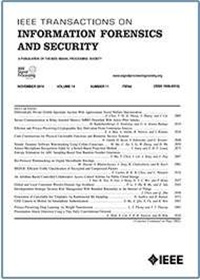一个语义引导和聚焦的闭塞人再识别网络
IF 8
1区 计算机科学
Q1 COMPUTER SCIENCE, THEORY & METHODS
IEEE Transactions on Information Forensics and Security
Pub Date : 2025-09-10
DOI:10.1109/TIFS.2025.3608672
引用次数: 0
摘要
人员再识别(ReID)对于监视、跟踪和刑事调查至关重要,但闭塞通常会导致部分信息丢失和噪声特征,从而显著降低ReID的性能。最近基于clip的闭塞人ReID方法通过利用跨模态对齐显示了有希望的性能,但仍然面临两个限制:第一,通用文本提示无法捕获特定样本的细粒度语义;其次,缺乏对遮挡场景下硬局部特征的有效增强机制。为了克服这些限制,我们提出了一个语义引导和聚焦网络(SGFNet),它包括三个协同模块。首先,为了解决缺乏细粒度文本描述的问题,我们设计了一个分割和文本生成(STG)模块,该模块对行人区域进行分割并生成特定于样本的文本特征,为当地行人区域提供详细的文本描述和空间信息。此外,为了准确提取细粒度特征,我们提出了双导特征细化(Dual-guided Feature Refinement, DGFR)模块。该模块利用双语义信息引导的空间注意机制,在有效抑制不相关区域干扰的同时,增强了判别性细粒度特征。最后,在DGFR模块的基础上,我们进一步提出了一个硬度感知语义焦点(HASF)模块。该模块利用分割线索来评估局部区域区分的难度,并采用精心设计的语义驱动的Focal Triplet损失来专门增强局部硬特征学习,从而提高模型在遮挡场景下特征提取的鲁棒性。大量的实验证明了SGFNet的优势,在三个闭塞的人ReID数据集上实现了最先进的性能,同时在三个整体的人ReID数据集上保持了竞争结果。本文章由计算机程序翻译,如有差异,请以英文原文为准。
A Semantically Guided and Focused Network for Occluded Person Re-Identification
Person re-identification (ReID) is vital for surveillance, tracking, and criminal investigations, yet occlusions often lead to partial information loss and noisy features that significantly degrade ReID performance. Recent CLIP-based occluded person ReID methods have demonstrated promising performance by leveraging cross-modal alignment, but still face two limitations: first, generic text prompts fail to capture the fine-grained semantics of specific samples; second, there is a lack of effective enhancement mechanisms for hard local features in occlusion scenarios. To overcome these limitations, we propose a Semantically Guided and Focused Network (SGFNet), which comprises three synergistic modules. First, to tackle the absence of fine-grained textual descriptions, we design a Segmentation and Text Generation (STG) module that segments pedestrian regions and generates sample-specific text features, providing detailed text descriptions and spatial information for local pedestrian regions. In addition, in order to accurately extract fine-grained features, we propose a Dual-guided Feature Refinement (DGFR) module. This module leverages a spatial attention mechanism guided by dual-semantic information to enhance discriminative fine-grained features while effectively suppressing interference from irrelevant regions. Finally, building upon the DGFR module, we further propose a Hardness-aware Semantic Focus (HASF) module. This module leverages segmentation cues to assess the difficulty of distinguishing local regions and employs a carefully designed Semantic-driven Focal Triplet loss to specifically enhance hard local feature learning, thereby improving the model’s robustness in feature extraction under occlusion scenarios. Extensive experiments demonstrate the superiority of SGFNet, achieving state-of-the-art performance on three occluded person ReID datasets while maintaining competitive results on three holistic person ReID datasets.
求助全文
通过发布文献求助,成功后即可免费获取论文全文。
去求助
来源期刊

IEEE Transactions on Information Forensics and Security
工程技术-工程:电子与电气
CiteScore
14.40
自引率
7.40%
发文量
234
审稿时长
6.5 months
期刊介绍:
The IEEE Transactions on Information Forensics and Security covers the sciences, technologies, and applications relating to information forensics, information security, biometrics, surveillance and systems applications that incorporate these features
 求助内容:
求助内容: 应助结果提醒方式:
应助结果提醒方式:


